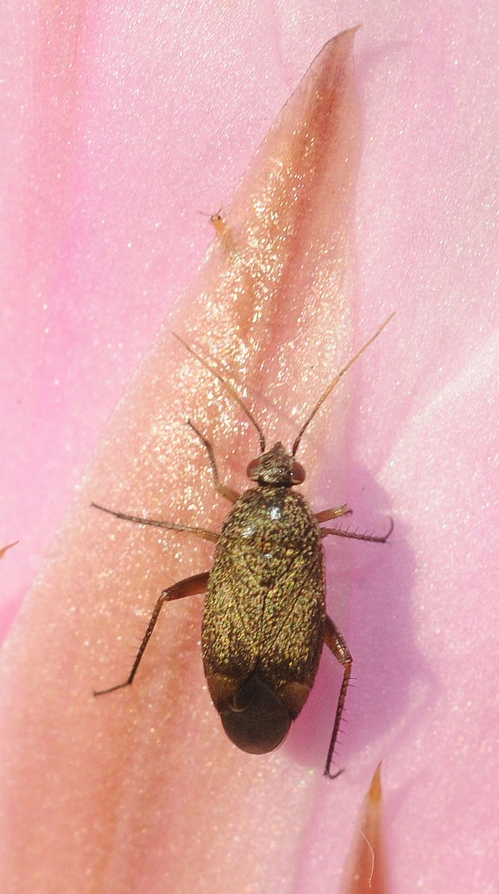So, you spot a bug crawling up and down a plant in your garden.
What is it?
Plant bug.
Plant bug? No kidding.
The common name for certain members of the Miridae family is--you guessed it--"plant bug." Entomologist Lynn Kimsey, who directs the Bohart Museum of Entomology on the UC Davis campus, quickly identified this little bugger.
"It's a Hemiptera," Kimsey said. Hemiptera, the fifth largest order of insects, all have a tubular beak for piercing and sucking. They're among the seven million insects in the Bohart Museum.
"Members of the family Miridae are the commonest Hemiptera in most areas of California," write entomologists Jerry Powell and Charles Hogue of UC Berkeley in their book, California Insects. "Many species attain high population densities, and most are specific to certain plants."
They describe the critters as "small, soft-bodied, elongate or oval bugs with prominent eyes and long, thin antennae and legs."
Most mirids, they say, suck plant juices (with their long beak) but some prey on other soft-bodied insects.
In case you're wondering, California has recorded more than 150 species of miriads.
So far.
The others, as they say, "await discovery."
In their book, Powell and Hogue list some of the species of plant bugs: ornate plant bug (Closterocoris ornatus), black grass bugs (Irbisia) and tarnishesd plant bugs (Lygus).
You can't go wrong, however, by calling it a "plant bug."
Attached Images:

Pretty in pink

Going Up

Going Down